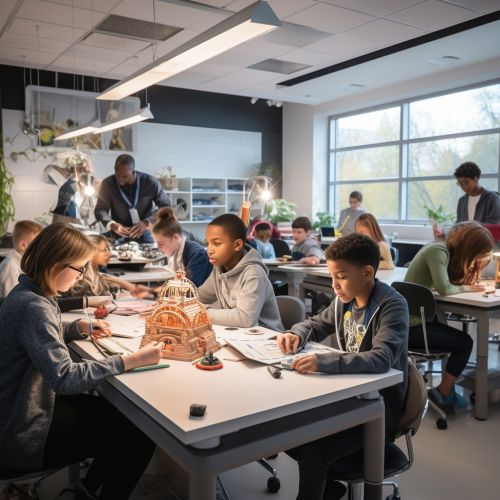Personalized Learning
Introduction
Personalized learning is an educational approach that aims to customize learning for each student's strengths, needs, skills, and interests. Each student gets a learning plan that's tailored to their abilities and learning style. This method of teaching and learning aims to facilitate the academic success of each student by providing a unique, individualized learning experience.


History and Development
The concept of personalized learning has its roots in the educational psychology and humanistic psychology movements of the 1960s and 1970s, which emphasized the importance of individual differences in learning. The idea of tailoring education to the individual learner has been around for centuries, but it gained traction in the late 20th century with the advent of educational technology that made it easier to individualize instruction.
Theoretical Framework
The theoretical framework of personalized learning is based on several key principles. These include constructivism, which posits that learners construct knowledge based on their experiences, and differentiated instruction, which involves adapting teaching methods to meet individual learning needs. Other important concepts include learner autonomy, self-directed learning, and metacognition, which involve learners taking control of their own learning process.
Methods and Strategies
Personalized learning can take many forms, depending on the specific needs and preferences of the learner. Some common methods and strategies include:
- Individualized instruction: This involves tailoring instruction to each student's unique learning needs. This can be achieved through a variety of methods, such as one-on-one tutoring, small group instruction, or the use of adaptive learning technologies.
- Learning pathways: These are sequences of activities that learners follow to achieve specific learning goals. These pathways can be linear or branching, allowing learners to progress at their own pace and choose their own learning activities.
- Project-based learning: This involves learners working on complex, real-world projects that require them to apply what they've learned in a practical context.
- Competency-based learning: This approach focuses on mastery of specific skills or knowledge areas, rather than time spent in class. Learners progress at their own pace, moving on to new material only when they've demonstrated mastery of the current material.
Benefits of Personalized Learning
Research suggests that personalized learning can have a number of benefits for learners. These include increased engagement, improved academic performance, and greater learner satisfaction. Personalized learning can also help to close the achievement gap by providing targeted support for learners who are struggling.
Challenges and Criticisms
Despite its potential benefits, personalized learning also faces a number of challenges and criticisms. These include concerns about the feasibility of implementing personalized learning in large, diverse classrooms, and the risk of exacerbating educational inequalities if some students have access to more personalized learning opportunities than others. There are also concerns about the over-reliance on technology in some personalized learning models, and the potential for data privacy issues.
Future Directions
The future of personalized learning is likely to be shaped by ongoing advances in technology, as well as continued research into the most effective strategies for individualizing instruction. Potential areas for future development include the use of artificial intelligence in education, the development of more sophisticated adaptive learning technologies, and the exploration of new ways to personalize learning in traditional classroom settings.
